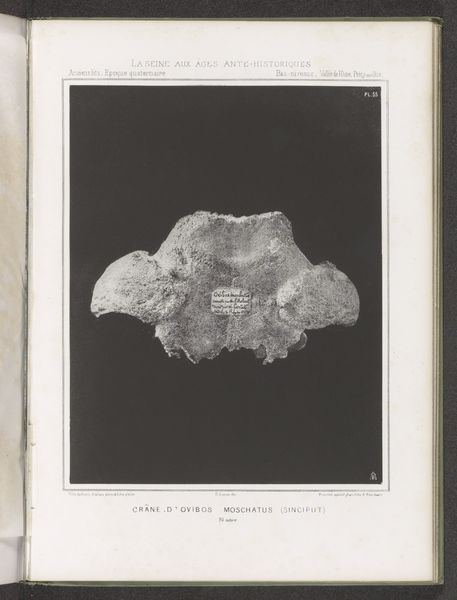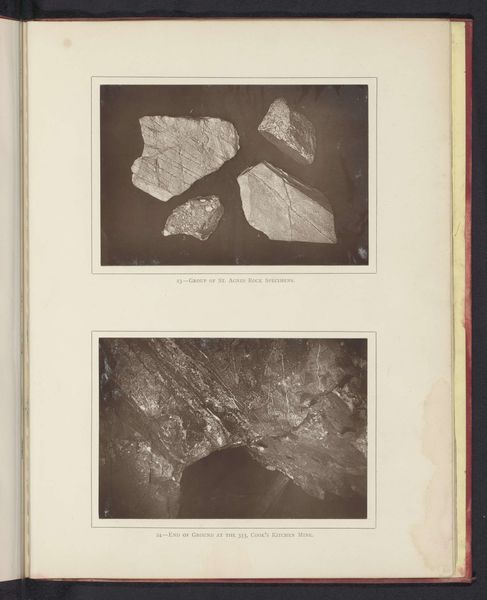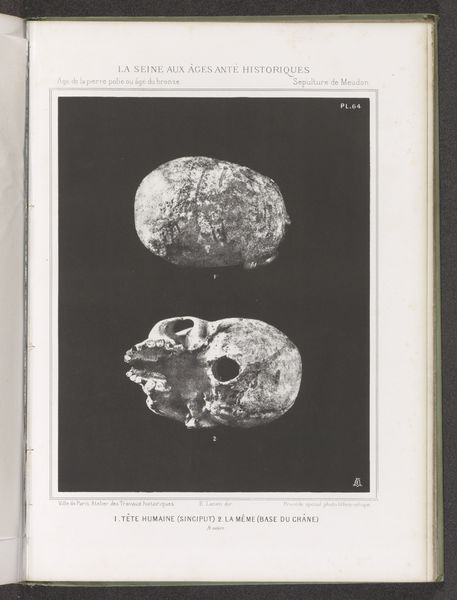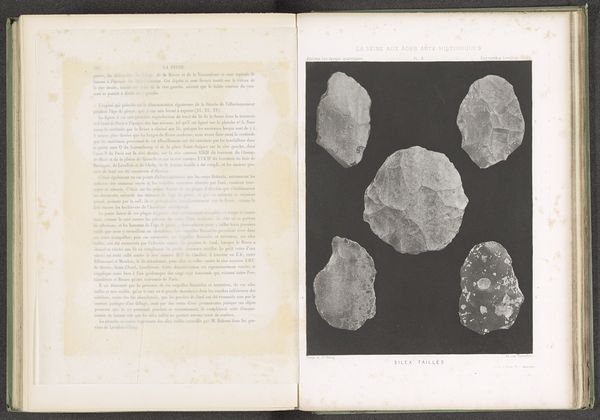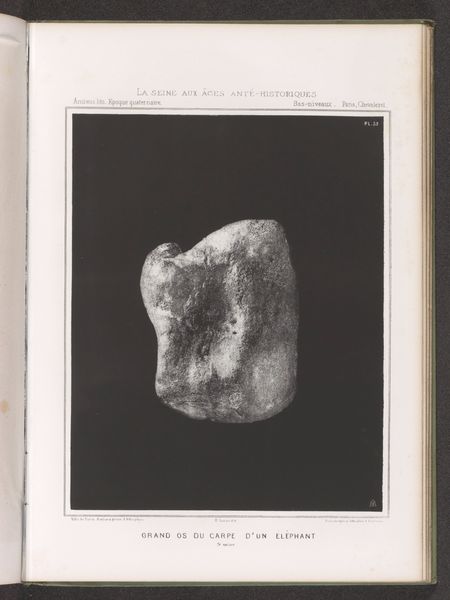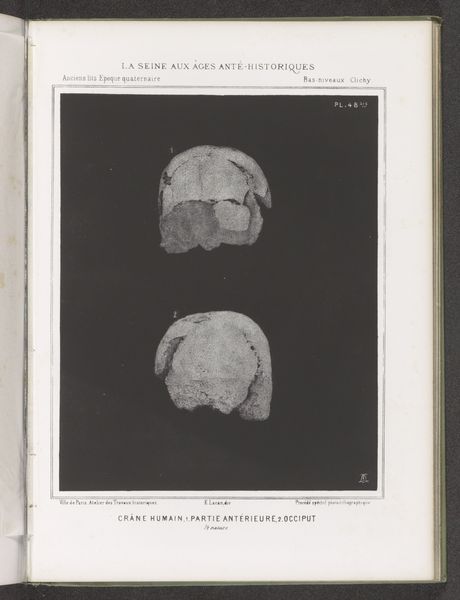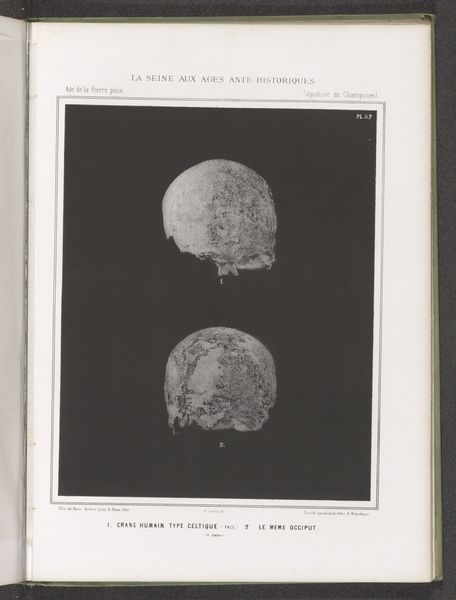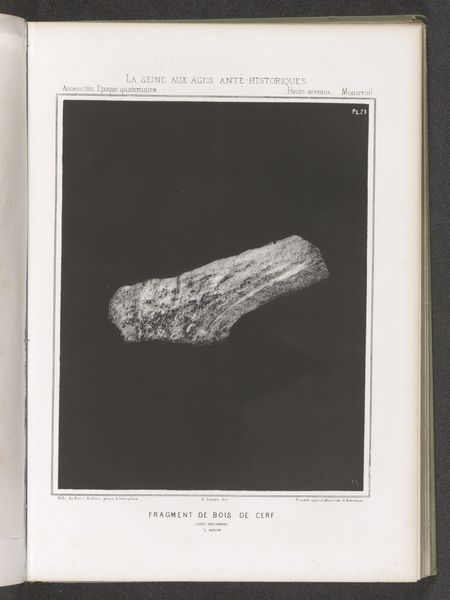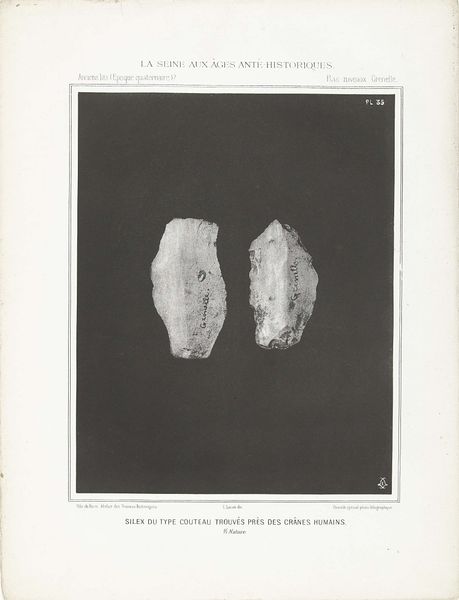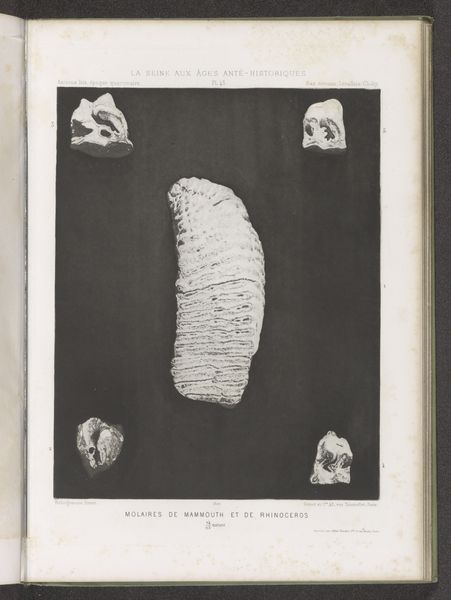
print, photography, albumen-print
#
aged paper
#
homemade paper
# print
#
photography
#
personal sketchbook
#
ancient-mediterranean
#
prehistoric
#
albumen-print
#
realism
#
historical font
Dimensions: height 239 mm, width 189 mm
Copyright: Rijks Museum: Open Domain
Editor: We’re looking at “Bijgekapte vuurstenen,” which translates to “Chipped flints,” a photographic print of prehistoric tools created before 1869 by an anonymous artist. It’s part of a larger bound volume. I'm struck by how it almost elevates these utilitarian objects, these very early technologies, to something worthy of artistic study. How would you interpret the significance of presenting something like this in a museum setting? Curator: That's a great observation. What this print reveals is a key moment in how we began to understand and categorize human history. Remember, museums in the 19th century were actively constructing narratives about civilization, and the inclusion of prehistoric artifacts was critical. Photography, a relatively new medium then, lends a scientific, objective air, but the careful arrangement and lighting within the photographic frame also suggest an aesthetic appreciation. It invites viewers to see these objects not just as tools, but as evidence of early human ingenuity and progress. Editor: So it's less about the tools themselves, and more about what they represent in the grand narrative of human development? Curator: Precisely. The image operates on a political level too. Displaying these "chipped flints" becomes a way of tracing a direct line of technological advancement to Western society. What are the implications of presenting that line as so...linear? Editor: It seems that there is no nuance, as if societies outside of Europe at the time weren’t equally valid. Curator: Indeed. It's about staking a claim to progress and defining "civilization" on very narrow terms, through a western lens. It reveals so much about how the Western gaze functions, framing history for very specific sociopolitical purposes. It wasn’t only about celebrating discovery, but about shaping cultural power. Editor: I had never considered how an image like this, seemingly simple, could be so loaded with social and political meaning. Curator: Exactly! These images, carefully curated, helped to define who we *thought* we were by defining where we *thought* we came from.
Comments
No comments
Be the first to comment and join the conversation on the ultimate creative platform.
